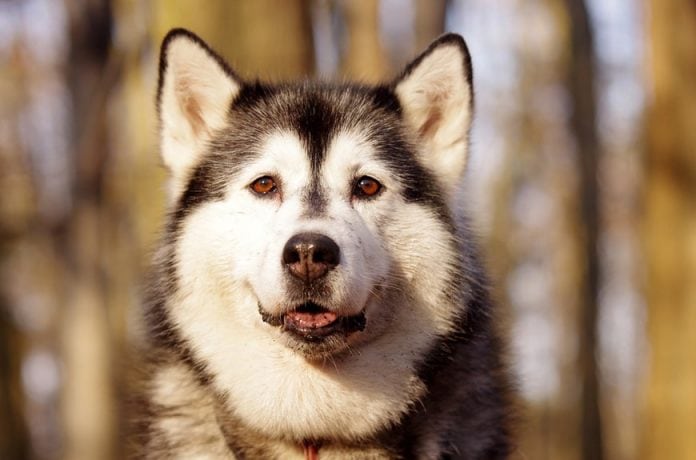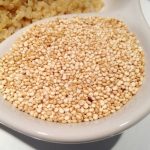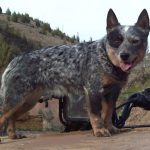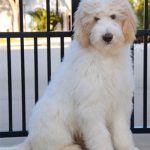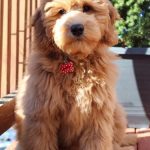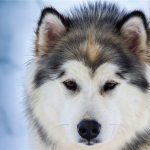The Siberian Husky is a popular working dog breed. Just like the other breeds in the Working Group, the Husky is intelligent and learns quickly. This breed is also dubbed as one of the oldest dog breeds in the world. Because of its alertness and strength, the Husky is efficient at pulling sleds. How long do Huskies live? Learn more about in today’s post.
The Life Expectancy of Siberian Huskies
A Siberian Husky has an average lifespan of 12 to 15 years. Like many dog breeds, female Huskies have longer life spans than the male ones. Their range is common among medium-sized dog breeds.
With proper care and nutrition, a Husky can survive 15 years or more. There is said to be a Husky that lived until he was 18 years old. This is not impossible, because Huskies possess genes that are not susceptible to life-threatening conditions.
What to Love about Huskies
Who does not want to be with a beautiful dog that resembles a wolf but has the playfulness of a toddler? Once you already have an idea of how to handle a Husky, you will find that this dog breed is a loving companion.
You don’t have to worry about its big size when you don’t have the penchant for large dogs. You could have a miniature Siberian Husky that is as charming as the original dog breed. Miniature Huskies are more manageable than the large ones but they share the same temperament with their larger counterparts.
One of the universal traits of Huskies is their inclination toward people. You will not have a problem introducing your buddy to new people. They can be very friendly even with strangers, something that makes them poor guard dogs. Because they can get along with anyone, they are suitable for people of all ages.
Aside from enjoying the company of their owners, Huskies also love to be with other dogs. They are dubbed as one of the best pack dogs. When you have a Husky, let him play with other dogs or take him to the dog park every now and then.
Huskies can be the perfect pets for families with children, given that they are not hypersensitive to dander and hair. It’s important to know that Huskies have the tendency to shed a lot and this can happen once or twice a year when the climates become warmer.
Common Health Problems of Siberian Huskies
Besides their good temperament, you will be glad to know that Huskies are generally healthy. The Siberian Husky Club of America noted that the only problems associated with Huskies are usually related to the eyes and the hips, which are as follows:
- Hip dysplasia – this occurs when the femur is not fitted accordingly to the pelvic joint socket. It is inherited and becomes worse when the dysplastic dog is on a high caloric diet.
- Corneal dystrophy – Huskies are classified as one of the dog breeds affected by a less severe case of corneal dystrophy. This refers to the cloud, which is often white or grey located in the middle part of the eye. This hereditary condition does not require treatment unless the dog’s vision is greatly affected.
- Progressive retinal atrophy – this group of degenerative eye disorders can result in total blindness if left untreated. This starts when the Husky loses his vision at night or in dim light. Over time, it can turn into the inability to see even during the day.
How to Help Your Husky Live Longer
Siberian Huskies are said to be high maintenance dogs because they only thrive in cold places. This is not always true. There are Huskies that survived even in tropical countries. They can actually adapt in warmer climates as long as they are given adequate shelter.
They don’t necessarily need a cool place because of their thick double coat. But if you are planning to get a Husky, at least make sure that your pet has access to a shaded area and cool water. Aside from their required living environment, here are other tips in caring for the Siberian Husky:
Bathe him only when needed.
The best part about Huskies is that they require minimal grooming. Their coat can naturally repel most dirt so you don’t really need to groom your Husky very often. Bathing is only necessary in case your Husky got into something really dirty.
Feed your Husky two to three times a day.
Feeding Huskies can be challenging because many of them are fussy eaters. Make your Husky’s meal more palatable by adding food toppers. You can use freeze dried raw meat as a topper for your dog’s usual meals. When choosing a dog food topper, opt for ones that don’t have fillers and grains.
In spite of their large size, Huskies don’t need to eat a lot. Huskies can thrive on small amounts of food given in two or three equal parts per day. If you wish to give your pet commercial food, ensure that it is formulated with nutrients that will offer complete nutrition to your pet.
They can eat home-cooked meals but be extra cautious when giving anything new to them. Avoid sugar, onions, garlic, chocolate, grapes, and raisins.
Spay or neuter
Spaying or neutering a Husky can help in giving the dog a longer life because it reduces the risks of a number of diseases, including mammary cancer. In male dogs, neutering is believed to prevent the risk of testicular cancer and prostate disorder. It is recommended that females be spayed the first season.
Unspayed female Huskies are more prone to uterine infections later in life compared to the spayed ones. Aside from the health benefits, spaying also has a few more advantages. It prevents overpopulation in dogs, which is already a problem in many parts of the world.
Avoid clipping or shaving.
Your pet’s coat is capable of protecting your Husky during winter or when it’s too cold. It can also keep him naturally cool during warm months so there is no need to shave him. Resist the temptation to shave your dog even when he is already shedding a lot. This will not be able to cool him down because your Husky only perspire from his paws.
Keep your yard secured.
Having a safe living environment for your pet is one of the ways to protect him. The dog will likely be in danger if it is allowed to escape and go wherever he wants. A Husky will run and escape when there is an opportunity. This is why many Husky owners have tall fences. Still, the best solution to this is to not leave your Husky alone for a long period of time as he can get bored and jump at the fence.
Clean your dog’s teeth regularly.
Avoid periodontal diseases by brushing your Husky’s pearly whites for around half a minute. Use a toothpaste and brush intended for canines. Never use regular human toothpaste for your Husky because the fluoride in it can be poisonous to dogs. Do it when your Husky is relaxed and it is best to start slowly in the beginning.
If it is really difficult to brush your Husky’s teeth, you can still keep his mouth clean with dental chews. The tartar and plaque are also removed as your dog chews it. It is a nice way to clean the dog’s teeth when he is too stubborn to allow you to do it. This somehow prevents the build-up of bacteria while keeping your Husky’s breath smell good.
Give him lots of walks and hikes.
Above all, it is important to know that Huskies are high-energy dogs. One of your commitment as a Husky owner is making sure that the pet gets to run, walk, or play outside every day. Otherwise, you should not buy or adopt a Husky in the first place.
As sled dogs, the Huskies are known for their inclination for vigorous activities. If you live nearby woodland trails, the best activity is hiking. If you are looking for an activity that is somewhat similar to pulling a sled, consider bikejoring and skijoring.
However, you have to lessen the exercise time once your Husky reaches his senior years. Seniority starts when the Husky is around 8-9 years old. By this time, expect your dog to show changes in his daily routines. He might start to mellow down. A short walk each day will be enough to keep him healthy.
Important Reminders Before Adopting a Husky
As you can see, Huskies are not for everyone. Aside from the life-long commitment, you also have to be aware of the common issues associated with this breed. This is one of the important things to know before deciding to buy or adopt one.
You will not always see him lying at your feet or lounging on the couch because this one likes to move around. Siberian Huskies have intense energy levels and they will run and try to escape when there is an opportunity. So, if you are not prepared for chasing games then don’t get a Husky.
When you are up for the commitment, it is time to go to a reliable breeder to get your pet. A Husky might the right breed for you if you wish to have a free-spirited dog. They are the best breed to get if you are up for an adventure and you also enjoy lots of physical activities.
You can find many pet stores selling good quality Huskies, but getting your pup from them comes with a risk. It’s possible that the pet store did not comply with all the genetic testing. Many Huskies from the pet store also have the tendency to develop bad habits because they lived in a cage for a while.
Your breeder should be able to present documents that will prove that the Husky is not vulnerable to health issues common to this breed. An ethical breeder is concerned about the safety of the pups, which means they are kept in a comfortable place.
The Bottom Line
You can help your Husky live longer than his average lifespan by giving him a proper diet and monitoring his health. Show your Husky that you love him by spending lots of time with him and buying him a treat. Give him the proper care he needs and you will be rewarded with a long life for your Husky.






